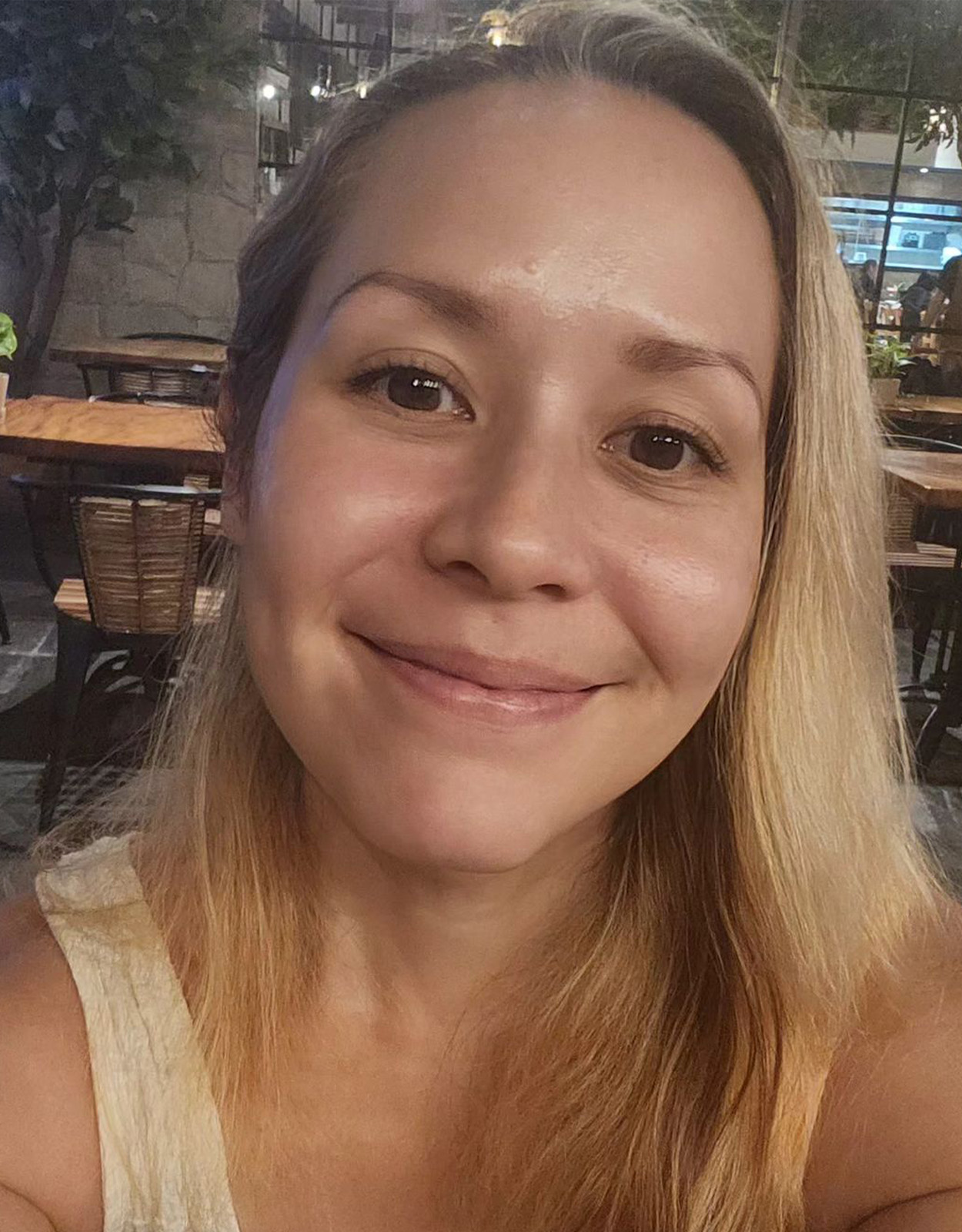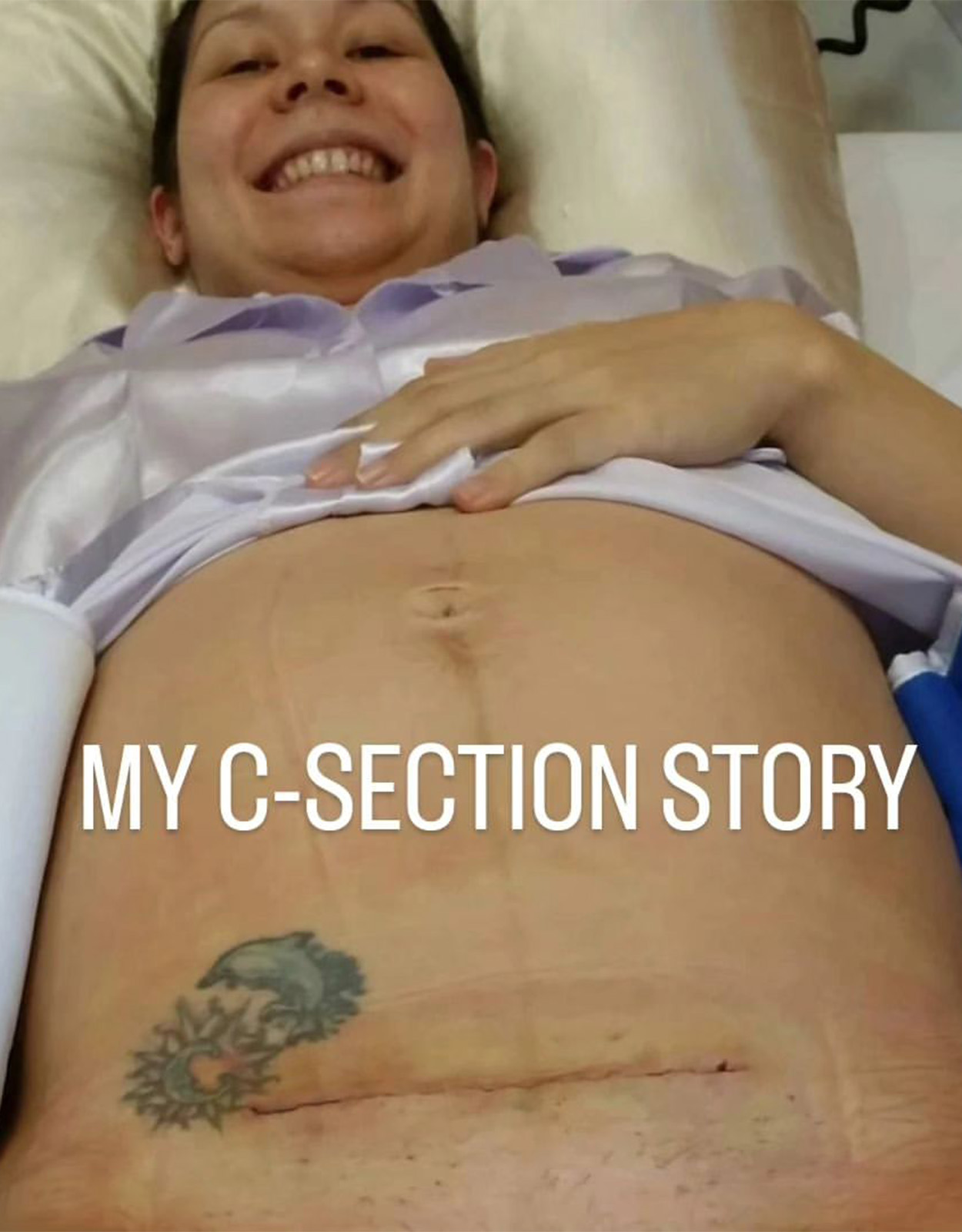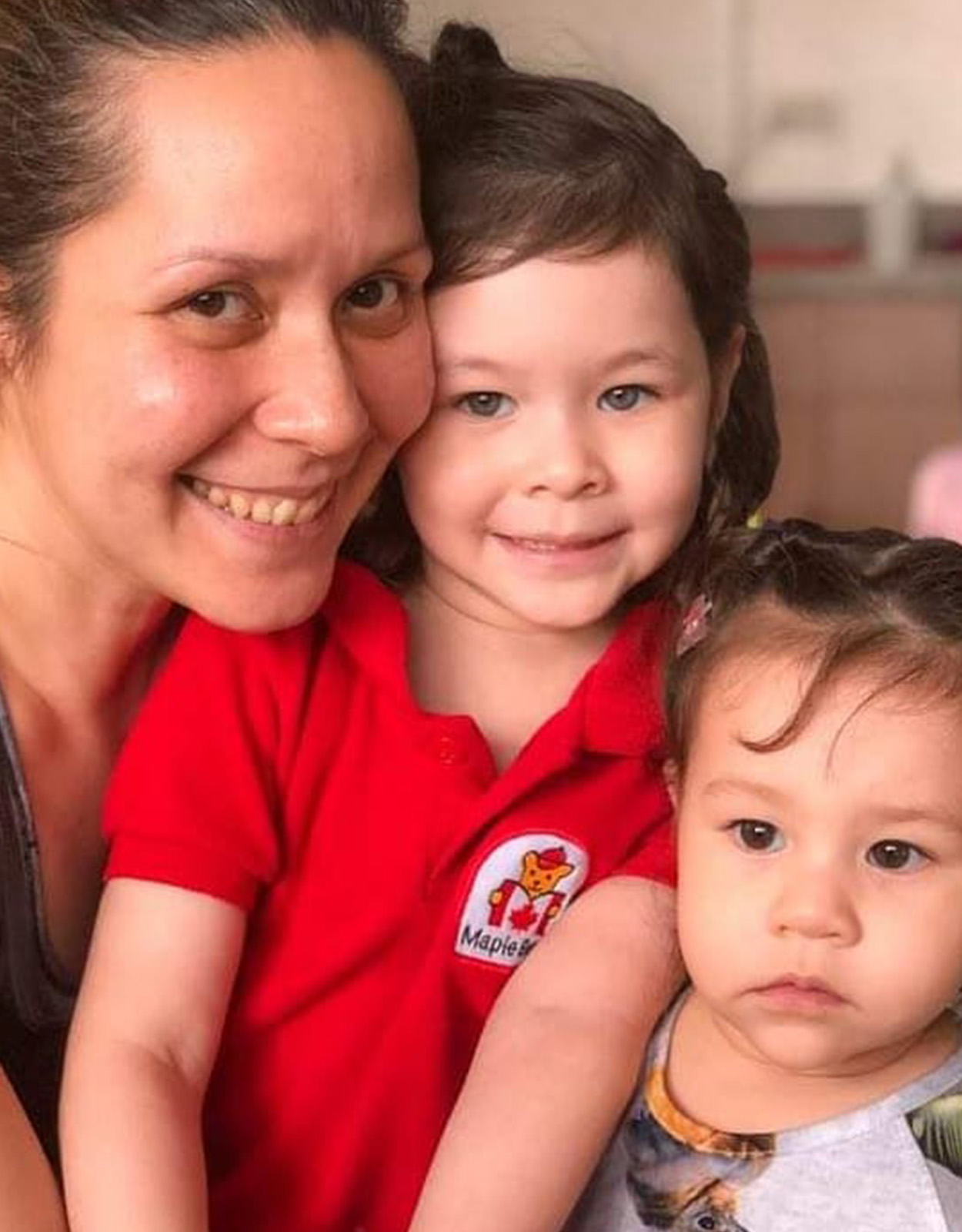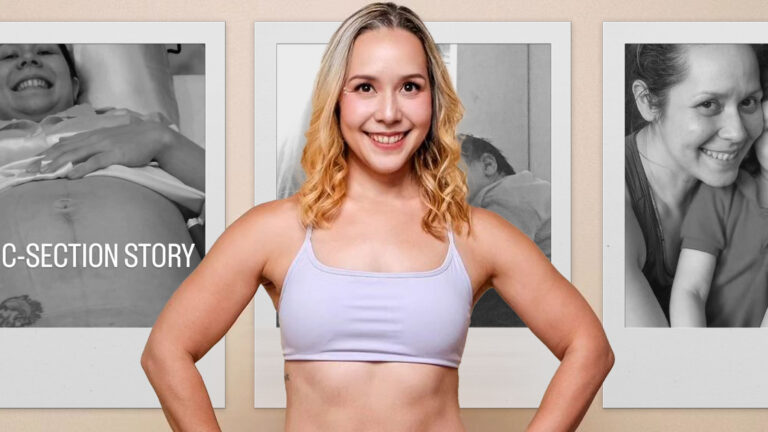Real Talk
Beyond the Incision: What You Need to Know About Cesarean Birth
In celebration of Cesarean Awareness Month, fitness instructor Mindy Lagdameo gets candid about what you need to know about cesarean birth.
Giving birth is the culmination of every pregnancy. As the catalyst that begins the chapter on parenting, it comes with physical and emotional changes that play vital roles in the motherhood journey—from the tender anticipation of meeting our little ones to the raw intensity of labor pains. But the thing is, no two births are the same—even for the same person.
Gentle labor, smooth-sailing hospital procedures, a serene environment, and the joyous first cries of our newborn…this is the end goal of every parent. But oftentimes, things may not go in the direction we want. Given the many possibilities, uncertainties, and complexities, this can evoke mixed feelings for any parent—even more so for first-timers.
This is why we need to reframe the narrative. Instead of treating it as a checklist of expectations to be met, giving birth should be seen as a path that’s paved with bravery, sacrifice, and unwavering devotion to the children we bring forth to this world. Whether natural or cesarean, there is no right way to give birth.
With April being Cesarean Awareness Month, we talk to diastasis recti and C-section recovery specialist Mindy Lagdameo about what to expect as a cesarean mom—from the realities, challenges, and triumphs that accompany it.

Mindy Lagdameo on why she advocates for cesarean moms
Having firsthand experience with a cesarean birth herself, she uses her birthing experience as a lesson for cesarean moms out there.
“My first delivery was horrific. 21 hours of active induced labor [with] back-breaking, excruciating contractions,” she recalls. “I was finally allowed [to have an] epidural at the 17th hour of labor, but it kept wearing off every 15 minutes and [the] baby was just stuck somehow. They finally decided at hour 21 that it was time for a spinal tap and c-section.”
At this point, her daughter Ellie was already in distress. Doctors rushed to get her out, and thankfully, she was born healthy. But for Mindy, the post-partum recovery process was intense. “The weeks and months after this were a blur,” she laments. “I couldn’t move properly, I didn’t understand what was going on with my body, and when I thought I could go back to moving and exercising again, I got badly injured.”
“There was NO ONE around to give me the advice and direction I actually needed,” she continues. “I ended up with a hernia and severe diastasis recti, postpartum depression, and PTSD. I felt so lost and alone and struggled so much in my recovery and journey back to myself.”

This soon inspired her to become a diastasis recti and C-section recovery specialist. “I realized that this needed to change,” she declares. “We all deserve more than what we get in the postpartum period. This also matters because of how we look after ourselves, how we feel, [and] how empowered we are. This is also how our children will see themselves.”
Misconceptions about cesarean birth
Drawing from her own experience—having given birth to her daughter via cesarean (c-section or CS) last 2018—she explains, “C-section is a major abdominal surgery, [where] they cut through seven layers of us to get to the baby. It’s the only major abdominal surgery that requires your recovering, post-op body to also nourish another human being as it tries to heal.”
With it come common misconceptions and myths that she aims to address. These include:
1. “It’s an easy way out!”
People assume that cesarean births are “an easy way out” or an “easier or less painful option,” given that anesthesia is administered to numb the pain. But that isn’t the case, given that in reality, cesarean births require a longer recovery period than natural birth.
“Whether we deliver naturally or not—there is nothing easy about delivering a baby!” Mindy exclaims. “So many of my clients have been told this, and I’ve heard this myself: ‘Di ka nag labor so di mo maiintinihan yun hirap na pinagdadaaan ng mga nanay.’ But the truth is that many of us that actually go through labor first—usually many many hours of painful labor before ending up with a c-section.”
“Those who didn’t still have to endure the fear and uncertainty of a pregnancy complication that caused them to make the decision to go under the knife. Then weeks of painful post-op recovery while caring for a newborn.”
“The bottom line is this—there is no ‘easy way.’ We all overcame an immense feat to birth our babies.”
2. “I need to rest for two years before I can exercise!”
Another misconception that Mindy addresses includes taking long breaks to rest to speed up the healing process.
“I have heard this from a lot of my clients as well,” the fitness coach recalls. “They were told not to ‘move” for two years para hindi bumuka yung tahi.’ The thinking behind this is that it can take up to 24 months for the full remodeling or maturation period of all seven layers of our scar.”
And while the advice came with good intentions, Mindy stresses, “This is actually false. Immobilizing your scar will NOT allow it to heal properly, and can cause adhesions and hardened tissues to form in between the scar layers. This causes pain, scar sensitivity, and core dysfunction symptoms. Our scar actually must be moved, mobilized, massaged, and mobilized in the right way to avoid this.”
“Your post-CS core must be rehabilitated from 6 weeks post-op and its function must be progressively restored to prevent the mama pouch, back pain or posture issues, and pelvic floor dysfunction symptoms like pee leaks,” she adds. “Do not be afraid to move after your c-section, the right movement is essential!”
It’s NEVER too late to restore your post-CS core—don’t think that you missed the bus just because your baby is not a baby anymore. You can optimize your body at any stage in the mothering journey!”
3. “Once a cesarean mom, always a cesarean mom.”
Another myth that Mindy wants to disprove includes the idea that once you’ve given birth to your child via c-section, the succeeding births need to follow the same process. Why? Because you may risk opening up the scar from your previous birth.
“‘Once a CS mom, always a CS mom,'” she quotes. “In the past, this was the case. But now we have the power to choose how our succeeding births will be. Whether you decide to try again to deliver naturally or choose to go for a c-section in your next delivery, ultimately, you will end up with what’s best for your body and your baby.”
4. “I need to stick to my birth plan!”
Having a baby isn’t just something parents decide out of the blue. Many preparations have to be made. From stocking up on the necessary medications to packing an emergency bag when the mom goes into labor planning which hospital to go to—down to whether the baby will be delivered naturally or via c-section—there are just so many responsibilities and considerations to factor in.
But things don’t always go as planned and for Mindy, it’s okay. “If you had a birth plan and it did not go the way you would have wanted please know that your body did not fail you. You just had to do whatever it takes to ensure your baby made it earthside, and this is completely okay.”

5. “You’ll need to live with the post-op pain forever.”
Like any surgery, the aftermath of pain is something moms face. And while many have learned to accept this as part of the process, Mindy debunks the myth—declaring that something can be done about it. “The first and most important thing to note is that you DO NOT need to live with this or accept that this is simply how your body is now that you have children.”
“You don’t need to live with pain or with a body you can’t understand,” she adds. “It is completely okay and even essential to advocate for your self-care and your health by finding specialists like myself that can help you learn how to optimize your body. A happy, healthy mama means a happy, healthy family.”
According to Mindy, the conditions and symptoms are actually caused by unresolved core dysfunction and/or improper scar care. These include:
- Persistent back pain (achy and ngalay feeling)
- The feeling of numbness or pulling feeling in the scar area
- Pelvic floor dysfunction symptoms like pee leaks when sneezing, coughing
- The feeling of disconnection between your core and your body
- Constant bloated feeling/ stubborn pouch and feeling of weakness in your core
A message to the partners: “Please be more understanding”
The mother’s body is a powerful one—having been able to bring forth a human being into the world. And with it comes a recovery process that differs from parent to parent.
While taking care of yourself is important, Mindy says that partners have to also empathize and extend a level of understanding towards these recovering moms, who have given a part of themselves in all this.

“Your partner is going through a paradoxical time,” Mindy ends. “She will feel both weak and strong at the same time and for different reasons. The best thing you can give your partner right now is grace to grow into the person she will become for herself [and] you, and your family. You need to give her all the support she needs to do this.”
More about pregnancy and birth!
Why a Healthy Thyroid Can Help in Pregnancy
Did You Know That Pregnancy and Breastfeeding Can Affect a Mom’s Eyesight?
Patti Grandidge-Herrera On Giving Birth In A Pandemic





